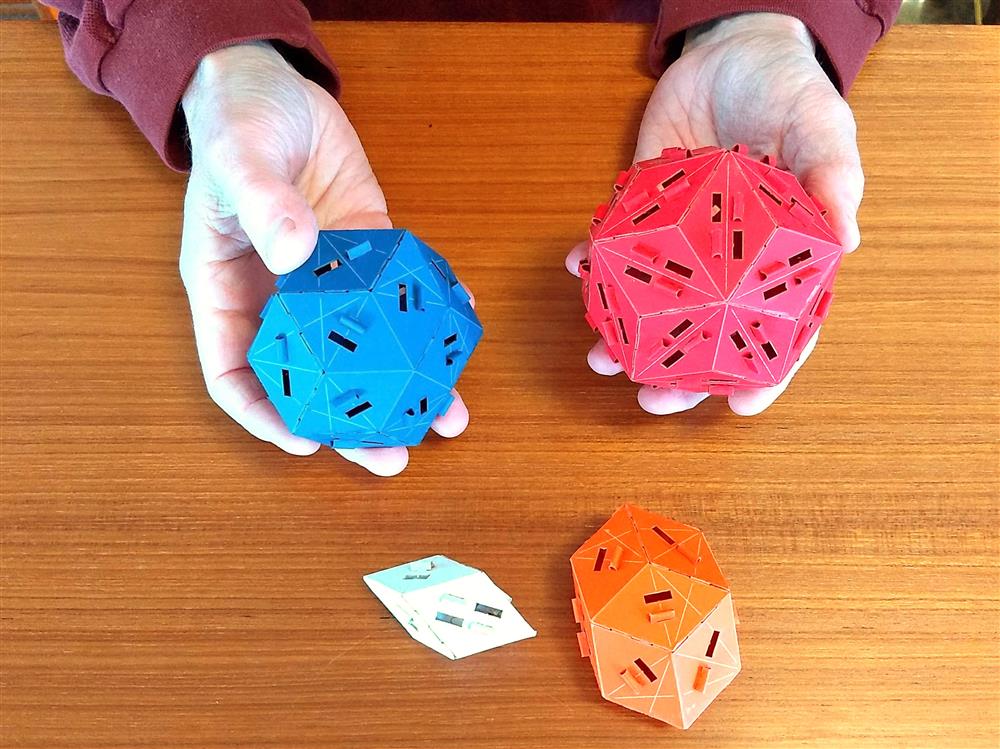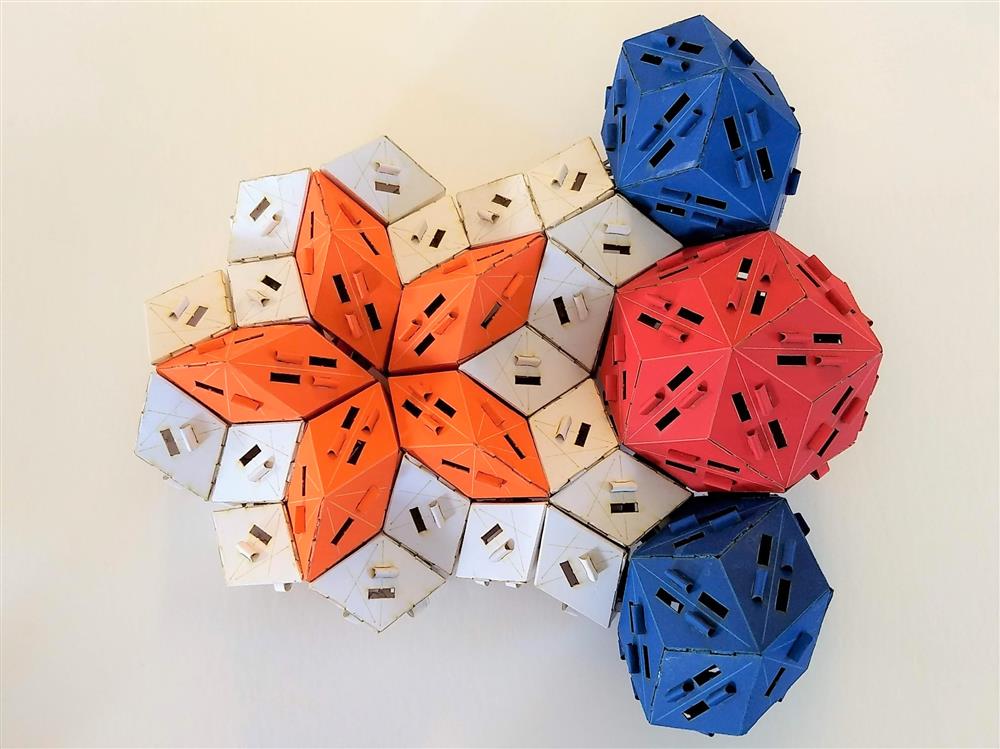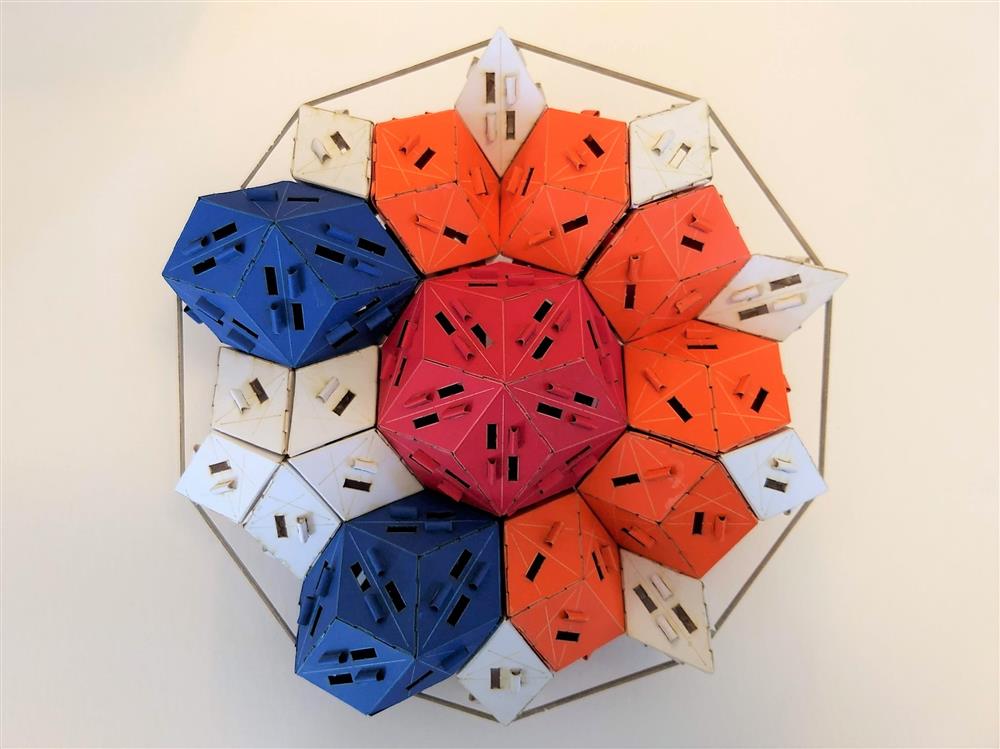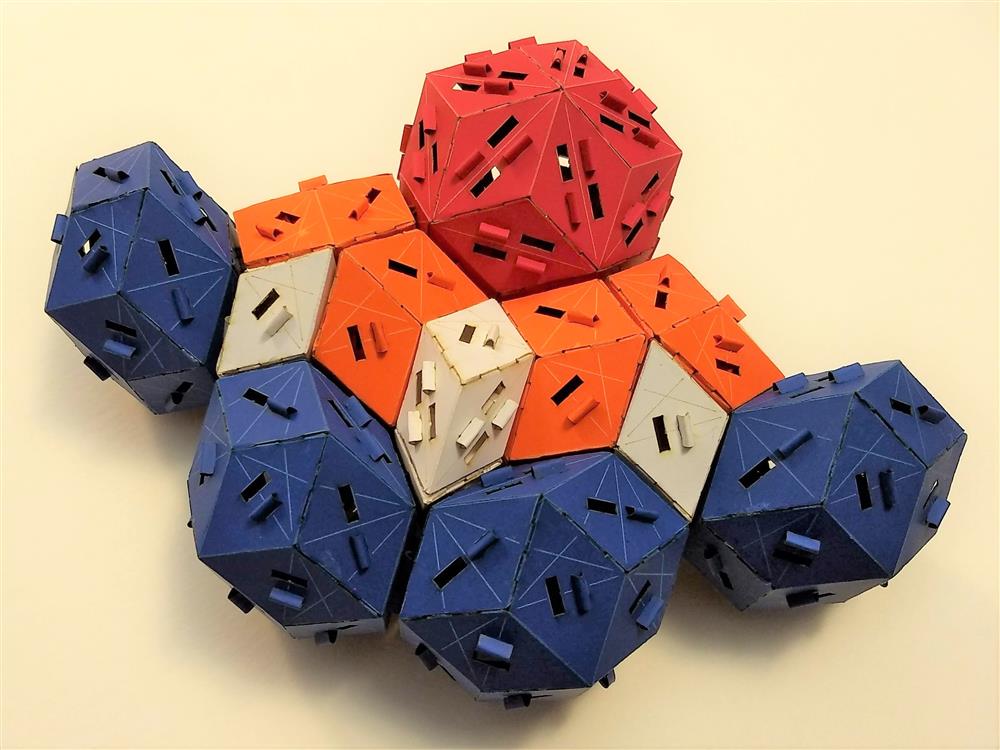Cut & Fold Quasicrystal Blocks
A quasicrystal (quasi-periodic crystal) is a structure, real or abstract, that is ordered but not periodic. The building blocks (unit cells) repeat quasi-periodically, not periodically. Quasicrystals can have unexpected symmetries; for example, icosahedral quasicrystals have a kind of five-fold symmetry. You can learn more about quasicrystals elsewhere. There is a good introduction to quasicrystals at paulsteinhardt.org/quasicrystals. The story of the discovery of quasicrystals is told in The Second Kind of Impossible by Paul Steinhardt.
One way to model an icosahedral quasicrystal is with a fascinating set of four polyhedral building blocks with face-matching rules. This four-block model was introduced and described in a pair of groundbreaking scientific papers (which can be found at paulsteinhardt.org/quasicrystals):
- Dov Levine and Paul Steinhardt, “Quasicrystals I: Definitions and Structure”, Phys. Rev. B34 596-616 (1986)
- Joshua Socolar and Paul Steinhardt, “Quasicrystals II: Unit-cell Configurations”, Phys. Rev. B34 617-647 (1986)
You can make yourself a small set of cut & fold cardstock quasicrystal blocks using my downloadable patterns (see below). The polyhedral blocks have face connectors that enforce the face-matching rules.




The patterns are intricate. It takes a lot of time to make even a small number of blocks. They are designed to be cut from cardstock with a laser cutter. If you do not have access to a laser cutter, you can still make a few blocks by printing them on cardstock and cutting them out with scissors and a razor knife.
To learn more about these blocks and how to make them, read this:
Quasicrystal Blocks: Description and Cut & Fold Instructions (PDF)
Then download the patterns:
Note: The quasicrystal building blocks are not a general-purpose creative building toy. The connectors are designed to constrain your constructions, not to allow creative freedom.
